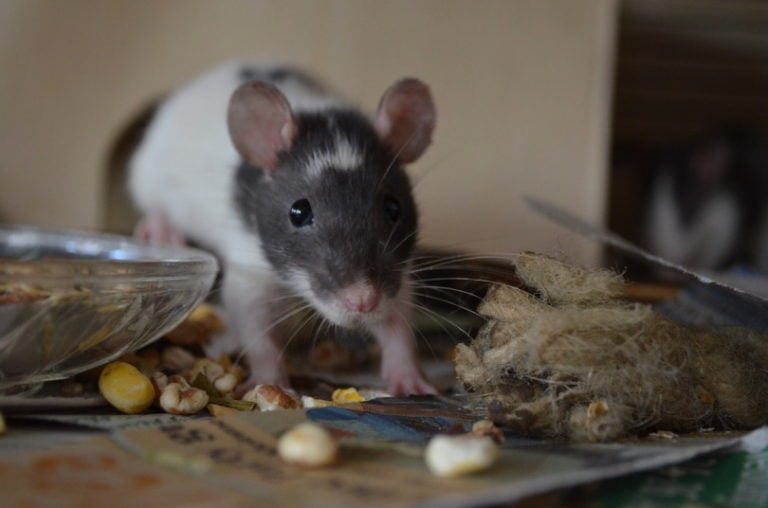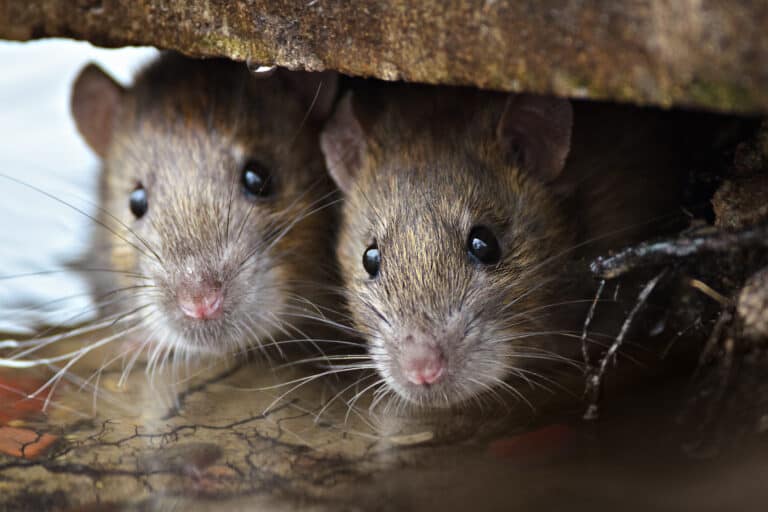

This general hypothesis of moonlight avoidance has been tested in an array of nocturnal rodent species, but the greatest support is from studies of North American desert regions where sparsely vegetated habitats are regularly exposed to bright moonlight. This evidence suggests that moonlight increases actual risk of predation from owls and other visual predators, such that rodents should be expected to perceive this risk and then alter their foraging patterns to reduce moonlight exposure on bright nights. Owls may be better able to detect movement when prey shadows are cast against substrate ( Kotler 1984b Lockard and Owings 1974a), resulting in reduced search times as illumination increases ( Clarke 1983).
#Are rats nocturnal full#
Studies conducted in laboratory settings and field enclosures find that several species of owls are more efficient at capturing rodents under simulated full moon conditions ( Clarke 1983 Kotler et al. 1998).įor nocturnal rodents, moonlight has been widely investigated as a predation risk cue ( Beier 2006 Caro 2005 Lima 1998 Lima and Dill 1990). Small mammals are thought to assess the probability of encountering a predator and succumbing to a fatal attack (the risk of predation sensu Lima and Dill ) by using indirect cues from the environment ( Caro 2005 Orrock et al. This behavioral trade-off emphasizes the adaptive value for prey animals to identify situations of varying risk while also making decisions about when and where to forage ( Caro 2005 Lima 1998 Lima and Dill 1990), yet the mechanisms by which prey species accomplish such a trade-off are not fully understood (reviewed in Stankowich and Blumstein 2005). However, antipredator and foraging efforts must be balanced to meet the energetic demands of survival and reproduction ( Brown and Kotier 2004 Rosenzweig 1974). Small mammals aim to avoid predators by limiting exposure to risky situations, and often reduce their activity or shift to safer habitats in response to perceptions of heightened risk (reviewed in Caro 2005). These findings indicate that moonlight avoidance may be a specialized trait of kangaroo rats rather than a general behavior of nocturnal desert rodents in the Great Basin.ĭipodomys, interspecific competition, lunar cycle, moonlight avoidance, predation risk, quantile regressionĪctivity patterns are determined by the concomitant need to avoid predators while acquiring food and mates ( Abrams 1993 McNamara and Houston 1987). Differences in the body size, locomotion, and space use of kangaroo rats relative to other rodents may explain why different moonlight responses were detected, especially if these traits alter how rodents perceive risk from bright moonlight. Rather than avoiding moonlight, the activity of deer mice ( Peromyscus), pocket mice ( Perognathus), and kangaroo mice may be governed by changes in competition with kangaroo rats. Moonlight seemed to limit the activity of kangaroo rats most strongly on bright nights during waxing moon phases and summer seasons, but not significantly during the spring or fall seasons, or during waning moons. Only kangaroo rats ( Dipodomys) displayed significant moonlight avoidance patterns they were maximally active at significantly different moonlight levels and avoided bright moonlight to a greater extent than co-occurring rodents. However, individual genera of desert rodents responded differently to moonlight. Analyses of total activity of all species in the rodent assemblage relative to moonlight showed a distinct nonrandom (triangular-shaped) pattern but no significant correlations. Activity patterns were assessed on 69 nights with clear skies and compared to corresponding moonlight values (moon phase and brightness) to evaluate the frequency of moonlight avoidance. Rodent activity was examined by livetrapping in open habitats, using the presence of the sand-obligate kangaroo mouse ( Microdipodops) as a habitat indicator.


We evaluated desert rodent activity patterns in natural habitats from 1999 to 2006 at 62 study sites across the Great Basin Desert of western North America. However, most prior studies have been limited to 1 species or 1 study site, or occurred in modified habitats. Moonlight avoidance behaviors have been observed in many nocturnal rodent species and are widely generalized to small mammals. To identify variations in the risk of predation, nocturnal rodents may use moonlight as a cue of risk. Rodents make foraging decisions by balancing demands to acquire energy and mates with the need to avoid predators.


 0 kommentar(er)
0 kommentar(er)
